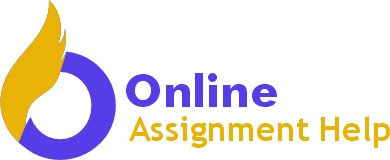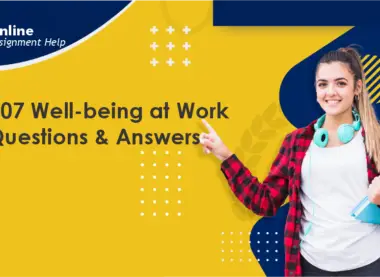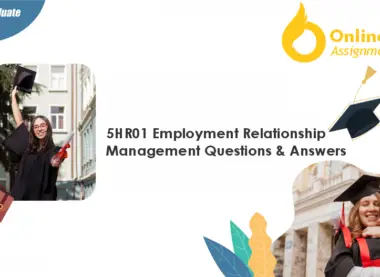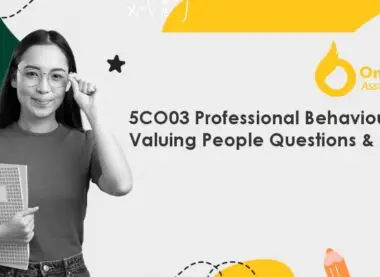| Business issues and the Contexts of Human Resources (5CHR)
Student name: |
|||
|
CRITERIA |
MET/ NOT YET MET |
COMMENTS
|
|
| LO1: Understand the key contemporary business issues and main external factors affecting different organisations and the impact on HR | |||
| 1.1 Assess a range of different factors which impact on an organisation’s business and its HR function. | |||
| LO2: Understand how organisational and HR strategies and practices are shaped and developed. | |||
| 2.1 Analyse the forces shaping the HR agenda. | |||
| 2.2 Compare different tools for analysing the business environment | |||
| 2.3 Explain the key stages in strategy formulation and implementation and the role of HR | |||
| 2.4 Examine HR’s contribution to business ethics and accountability | |||
| LO3: Know how to identify and respond to changes in the business environment | |||
| 3.1 Evaluate business performance and the role of HR in business planning and the change management agenda | |||
| 3.2 Assess and utilise different sources of business and contextual data for planning purposes | |||
|
ASSESSMENT OUTCOME
|
|||
| Title of unit/s | Business Issues and the Contexts of Human Resources | |
| Unit No/s | 5CHR | |
| Level | 5 | |
| Credit value | 6 | |
| Assessment method(s) | Written paper for delegate pack | |
| Expiry date | September 2020 | |
| Learning outcomes:
1 Understand the key contemporary business issues and main external factors affecting different organisations and the impact on HR. 2 Understand how organisational and HR strategies and practices are shaped and developed. 3 Know how to identify and respond to changes in the business environment. |
||
| Assessment brief/activity
You have been asked by your CIPD Branch to lead a discussion at one of its events on ‘The evolving role of HR in the contemporary business world’. In preparation for the event you have been asked to produce an academic paper for the delegate pack, which includes the following:
· A comparison of two different tools* for analysing an organisation’s business environment · An assessment of at least four factors which might impact on an organisation’s business and its HR function. · An analysis of two forces currently shaping HR and the HR agenda. · An explanation of the key stages of business strategy formulation and implementation and the potential role of HR in each of these. · An examination of the contribution HR can make to business ethics and accountability. · An explanation, with examples, of how business performance can be evaluated and the role of HR in ongoing business planning and change management. · An assessment of three different sources of business data with examples of how each can be used to inform business planning. |
Assessment Criteria
2.2
1.1
2.1
2.3
2.4
3.1
3.2 |
|
| Evidence to be produced/required
A written paper of approximately 3900 words in total.
*Note: The analysis tools should not include SWOT
You should relate academic concepts, theories and professional practice to the way organisations operate, in a critical and informed way, and with reference to key texts, articles and other publications and by using organisational examples for illustration.
All reference sources should be acknowledged correctly, and a bibliography provided where appropriate (these should be excluded from the word count). |
||
| Guidance Business Issues and the Contexts of Human Resources (5CHR)
LOs 1, 2, & 3 To achieve a pass, candidates should produce work equating to approximately 3900 words, which reflects the guidance given below.
Candidates should relate academic concepts, theories and professional practice to the way organisations operate, in a critical and informed way, and with reference to key texts, articles and other publications and by using organisational examples for illustration.
All reference sources should be acknowledged correctly, and a bibliography provided where appropriate (these should be excluded from the word count).
|
|
|
AC 1.1
|
Candidates should assess a range of factors that can have an impact on an organisation’s business and its HR function. You would expect them to include reference to government policy, the prevailing economy and market conditions, demographic, social and technological trends, globalisation and to internal factors such as stakeholders, financial health, communications etc. Candidates should summarise the impact these factors can have on the organisation and its HR function.
|
|
AC 2.1
AC 2.3, 2.4 |
Candidates should analyse some of the forces which shape the HR agenda. You would expect them to refer to different models of the HR function, HR strategies, insights and solutions to support business performance and stakeholder expectations. Candidates should give examples of different tools that can be used to analyse the business environment. They should compare at least two different tools e.g. SWOT, PESTLE, Porter’s 5 Forces. Candidates should summarise the key stages in strategy formulation. With reference to models from the literature. They can choose any model provided it addresses the key stages from goal setting to evaluation and review. They should give examples of the contribution of HR linked to each of the stages. They should include the role of HR in promoting business ethics and accountability. |
|
AC 3.1
|
Candidates should give examples of how business performance can be evaluated and may structure these examples under ‘traditional’ and ‘modern’ indicators. You would expect them to include different types of metrics and how these can be used, HR metrics. They should give examples of how HR contributes to business planning and in a change management agenda e.g. HR as a change agent (modelling and communicating the change, engaging others and providing support). Candidates should give an analysis of different examples of sources of business and contextual data e.g. internal information within the organisation including HR metrics such as HR costs, responsiveness, issue management, recruitment, productivity etc and industry information e.g. trends in HR, competitive information, government information. They should explain how these data can be used for planning. |
AC 1.1
The human resource professionals are expected to provide services in line with the expectations and adherence to the guidelines of the CIPD professional map. The CIPD professional map helps to outline the expected service delivery outlook and hence acts as a guide to improve professionalism in the field of human resource. The HR has a role to play in different ways as guided by the CIPD professional map. First, the human resource professional are mandated with the role of hiring and maintaining talent in the organisation (Mayo, 2016). In the process of hiring, the HR department seeks to recruit and maintain workers who have the necessary core knowledge, right behaviors, and are specialists in their area of service delivery. The process of recruiting, hiring, and selecting workers should be guided by the set measures and requirements as outlined in the job description (Mayo, 2016). In this case, it is the role of the HR officers to design the job description and specifications tools to be used in the selection process. The HR professional is mandated at improving the productivity of the organisation by driving changes through different approaches. In line with the proficiency outlined in the professional map, the HR should identify the resource needs of the workers and act to ensure that they provide the same in order to champion change (Mayo, 2016). In doing this, the organisation will be acting consistent with the CIPD on core knowledge and core skills
The HR should also facilitate training and development among the workers. In providing training and development the HR functions in improving the competency on core skills and core behaviors (Mayo, 2016). The HR should also conduct assessment and management appraisal and performance assessment. Concerning this, the HR professional should develop the criteria for performance measurement and appraisal tools. The CIPD HR professional map is grouped into three major areas: core knowledge, core behaviors, and specialist knowledge. Therefore, knowledge assessment and analysis is a central aspect of the core knowledge as it explores on the different issues regarding the knowledge abilities among the workers. It is strongly related to the performance assessment, which is a key pillar that explores on the organisational improvement towards greater performance in an entity. Performance assessment explains that the needs of the workers ought to be analyzed in an ideal manner in order to establish the competency gaps in knowledge, skills, and behavior to be filled in line with the CIPD professional map (Mayo, 2016). The HR also have a role in inculcating the organisational behavior through the mentoring, coaching, and training programs among other avenues in order to inculcate core behaviors among the workers. In doing this, the organization’s HR acts in line with the CIPD professional map on core behaviors. Other than recruiting, the HR is also mandated with talent management, which encompasses the use of different motivational approaches (Mayo, 2016). Talent management encompasses maintaining the right personnel for the job, which prevents incurring huge costs of hiring. Talent management is a function that promotes CIPD professionalism by promoting high skilled and knowledgeable individuals.
AC 1.2
At the work place, most organizations are promoting team work, which is attained by working in groups. However, group dynamics are a common cause of conflicts if not properly maintained. The group dynamics may be a cause of conflicts depending on the background, personality, culture, and ethnic affiliations of the members (Davis, 2016). The group dynamics are explained into five stages of development: forming stage, storming phase, performing stage, and adjourning stage. The forming phase is the initial stage of the group formation as it is characterized by the uncertainties and confusion among the members of the group (Davis, 2016). During this phase, the members of the group engage in familiarizing with one another. During this stage, the individuals take part in direction where they get familiar with the desires for the group, the reason for its formation, and build up the standard procedures to be pursued. In most case, strife emerges during this phase when they are raced to a degree that there is no sufficient time to build trust and transparency (Davis, 2016). On the off chance that conflicts emerge at this stage, it turns into a reason for low cooperation and poor relationship.
The second category of element of the group dynamics are exhibited in the storming phase. During this stage of group dynamic are incredible odds of contention and difference since the individuals frequently conflict due to group objectives and vie for singular accomplishments as opposed to working towards a collective goal (Davis, 2016). Also, at this stage, colleagues contend to get initiative position. In the event that conflicts are not settled at this stage, there are odds of parting or even stay inadequate. Conflicts at this second stage are likewise connected with stagnation and absence of progressions in the gathering procedure (Davis, 2016). The norming phase is the third stage that is portrayed by express show of the individual contrasts and desires. At this stage, individuals begin to build up a sentiment of gathering personality. Further, the helpful endeavors begin to yield and the duties are very much common among the individuals from the gathering. Conflicts at this stage are minimal as the members have normalized their relationships and are working towards the common interest of the group (O’Neill, & McLarnon, 2018). The following stage is the performing stage where the group gets developed to achieve the aggregation objective. Also, at this stage, there is acknowledgment of each other and conflicts are settled through appropriate commitment as a group (O’Neill, & McLarnon, 2018). Moreover, members settle on choices through a judicious procedure and there are no feelings appended to the individual objectives.
The last stage is dismissing stage, described by adjournment of the group. At this stage, there is an exhibition of happiness because of the achievement of the gathering goals. However, there is an inclination of misery because of the conclusion and takeoff. The grouping elements could negatively affect the human asset because of the contrasts between the laborers in view of decent variety in values, demeanors, needs, and characters (O’Neill, & McLarnon, 2018). Accordingly, if the group dynamic elements are not controlled well, they can be a reason for low efficiency and enormous cost implication. Further, the extent of attainment of the goals is dependent on the efforts towards collective goals as opposed to individual accomplishments.
AC 2.1
Project management encompasses the practice of initiating work, planning for execution, controlling, and closing on the work of the team to achieve specific goals within a specified timeline. The primary objective of the project management is to attain the project goals within the required time constraints (Tracey, 2016). The practice of project management is crucial in HR due to many reasons. It helps the human resource department to complete the organisational HR functions within the required timeline and in adherence to the budgetary allocations. Human resources use the project management in budgeting and monitoring the progress of the HR functions and processes. While expediting my duties as a supervisor in human resource, I was involved in the automation of the operations in the human resource department. Due to the increase in the demand of the deliverables in the human resource department, there emerged the need for the automation of department. The process of automation is multidisciplinary and is constituted of many tasks that collectively culminate into the attainment of the objective: system development (Tracey, 2016). To develop this system, the organisation had outsourced developers, who were to work with the internal IT team to facilitate the process. As the organisation HR supervisor who was mandated to liaise with the developers and the IT department, I was to ensure that the project was completed within the required time and all the deliverables were attained. To attain this general objective, I had to liaise with my HR officers to lay down the system requirements based on the contemporary roles and pass the same to the IT department. We sat down as a team and developed the work schedule that would ensure that automation for all the HR operations were completed within the required time, resources, and with the specified standards. I liaised with the IT department for the development of the work-breakdown structure as well as the Gantt chart while keeping in mind the timelines as suggested by Tracey (2016). In addition, I used the developed system to monitor the progress of the project. In instances where there were delays, I would liaise with the team to seek the explanation as well as make adjustments since we had made contingency planning during WBS development. We managed to complete the project within the given time, worked within the budget, and met the standards set. Having worked with the project management tool, I can attest that it helped in scheduling tasks to people, allocating resources and time for the collective attainment of the goals.
AC 2.2
While handing human capital, it is necessary to have problem solving skills to resolve issues that arise related to management of human capital (Mayo, 2016). In my area of work, I have been involved in working with employees who were not meeting deadlines and targets. This was a real problem to the organisation as it was affecting the client’s satisfaction and financial goals of the organisation. The officer in question was disciplined and had no cases of indiscipline. I sought to understand from him what could be the reason. To determine this issue, I chose to express my worry to the representative in a non-fierce way. I called the official and disclosed to him the current issue and the potential repercussions. In accordance with the CIPD proficient guide, I esteemed the representative and disclosed to him that he was so helpful to the firm yet in addition communicated the disappointment in his administration conveyance. I offered the worker a reasonable hearing to comprehend the issue. I was stunned to discover that the worker was suffering from home based problems that were affecting him. I shared the case to the human asset director, together with the past presentation examinations, to show to him why the association expected to support the representative. The worker was taken through a counseling program, supported for his family and later became one of the productive members.
The issue of conflicts due to job role allocation is a serious matter that requires careful attention. I encountered this problem in the organization where workers were being assigned roles without clear demarcation of the roles. This was affecting the organisation since the conflicts were delaying the delivery of the services and the team was not productive in an ideal manner. This was a difficult moment for me to resolve since there were no unequivocal terms of commitment that would plainly demystify the roles of every worker. I needed to tune in with a receptive outlook and pose inquiries that would assist me with understanding the inclination of the every worker. To tackle the issue, I assessed the qualities of the laborers, where one was progressively intrigued with the jobs that necessary scientific calculation whiles the other was best at aggregating reports. This framed the reason for the job distribution where the jobs were very much demystified and fitting expected set of responsibilities made. From that point forward, the representatives were taking a shot at various work areas with clear and unmistakable jobs.
AC 2.3
Persuading colleagues may be a difficult task. However, with persuasion skills, it becomes possible to have an influence on people over a certain objective. At one instance, I persuaded my colleagues on team work. At one point, the organisation was migrating to an automated system and therefore we were required to enter data into the new system. The data was enormous and it would take us a lot of time. Having analyzed the nature of the workload, I saw it fit to work as a group as opposed to working individually. I reviewed the options that were there including working individually and setting personal goals to complete the task before settling on team work. To do this, I developed a work plan based on the number of forms that we were to address. To persuade my colleagues, I applied an ethical approach together with the use of factual data to convince my friends that this was the right thing to do. While understanding that most of the workers students could barely borrow my idea and assist me to accomplish the project, it was necessary to convince them the importance of team play. In this case, I applied a pathos approach by explaining to them that working as a team is easier to accomplish the goals as opposed to working individually as explained by Lin (2019). This did not deter backlash from colleagues, I would even argue to create guilt in them that working as individuals and in competition was not right. In doing this, it would create an inner conviction that there was a need to work as a group for a common goal. This was aided by the explanation using factual data on how would could accomplish the objective using a team work approach. I managed to convince them through showing a plan that would work. At the end of the day, we started working on data as a team while working on batches at a time before moving to the other batch. We managed to complete the tasks before the scheduled time.
AC 3.1
From the analysis, it emerged that I meet the requirements on employee engagement, employee relations, and acting as a role model. In regard to employee engagement, my strong points are: developing employee engagement proposals, researching and developing authentic and appealing employer. I also act in modeling drivers and employee engagement, behavior and motivation. I am competent in using research to develop insights, implementing practical and timely solutions, partnering with HR colleagues, influencing senior managers, and developing an ongoing engagement and communication plans on organisational values and behaviors. In regard to employee Relations, the analysis indicates that I meet the knowledge and skills requirements. I also demonstrate someone who is strong experienced in HR and employee relations. Some of my strengths are ensuring awareness’s and compliance on legislation and anticipating changes in employment law, and providing training for employees as required. I am also competent in developing employee relation plans, policies and in practice. However, I have a gap in leading key negotiations and fostering constructive working relationship with trades unions, work councils, employee. From the behavioral perspective, I meet the standards for the collaborative behavior. Concerning this, I am working effectively and inclusively with a range of people, both within and outside the organisation. I am also acting as a role model by constantly leading by example. The assessment outcome reveal that I am acting with integrity, impartiality, and independently.
AC 3.2
To address my developmental objective, I consider it essential to acquire skills and experience in the HR profession. For instance, to improve my engagement skills as part of professional score, I should consider reading courses, reading materials on employee engagement, and working on practical development. To improve my employee relation skills, I’ll read on materials relating to this, engage in practical development by working closely with managers, senior leaders, unions and other bodies to understand more on employee relations. I will be required to seek more knowledge, learn more, and get the necessary professional certification by attending seminar and workshops. In addition, I may also practice through offering consultancy and provision of HR services either on internship or employment basis to be able to acquire skills on provision of core knowledge
AC 3.3
The CPD emphasizes on three broad categories: professional core knowledge, specialist knowledge, and core behavior. From the self-assessment, it is evident that I am doing well in regard to employee engagement, employee relations and in core behavior by being a role model and acting in collaboration. However, I have a gap in negotiations and fostering constructive working relationship with trades unions, work councils, employee. I am also doing well in regard to promoting conducive working conditions by promoting diversity in the workforce. Going by the assessment outcome, I can improve my skills by learning more and taking developmental actions such as attending training and seminars, being involved with the people.
References
Davis, J. P. (2016). The group dynamics of inter-organizational relationships: Collaborating with multiple partners in innovation ecosystems. Administrative Science Quarterly, 61(4), 621-661.
Lin, W. A. N. G. (2019). Three Modes of Rhetorical Persuasion. Sino-US English Teaching, 16(3), 106-112.
Mayo, A. (2016). Human resources or human capital?: Managing people as assets.NJ: Routledge.
O’Neill, T. A., & McLarnon, M. J. (2018). Optimizing team conflict dynamics for high performance teamwork. Human Resource Management Review, 28(4), 378-394.
Tracey, W. R. (2016). The human resources glossary: The complete desk reference for HR executives, managers, and practitioners. NY: CRC Press.
Planned outcome
To bridge my gap on leading key negotiations and fostering constructive working relationship with trades unions, work councils, and employee forums.
| What do I want/need to learn?
Learning more skills on employee engagement
|
What will I do to achieve this?
· Benchmarking on international practices in on larger companies · Read materials · Attend seminars and workshops |
What resources or support will I need?
Adequate funding |
What will my success criteria be?
Applying best employee engagement practices in my HR team |
Target dates for review and completion
December 30th2019 |
| Improving my skills HR negotiation
|
· Reading materials
· Engage in negotiations forums · Attend conferences and workshops on trades unions
|
Necessary materials and scholarly journals | Ability to negotiate on behalf of the workers | January 30th 2020 |
| Fostering employee relations needs in HR | · Joining the necessary employee training and development program
· Reading materials · Engaging in employee forums |
Time and Funding to attend the programs
Scholarly materials |
Ability to relate better with employees | January 30th |






